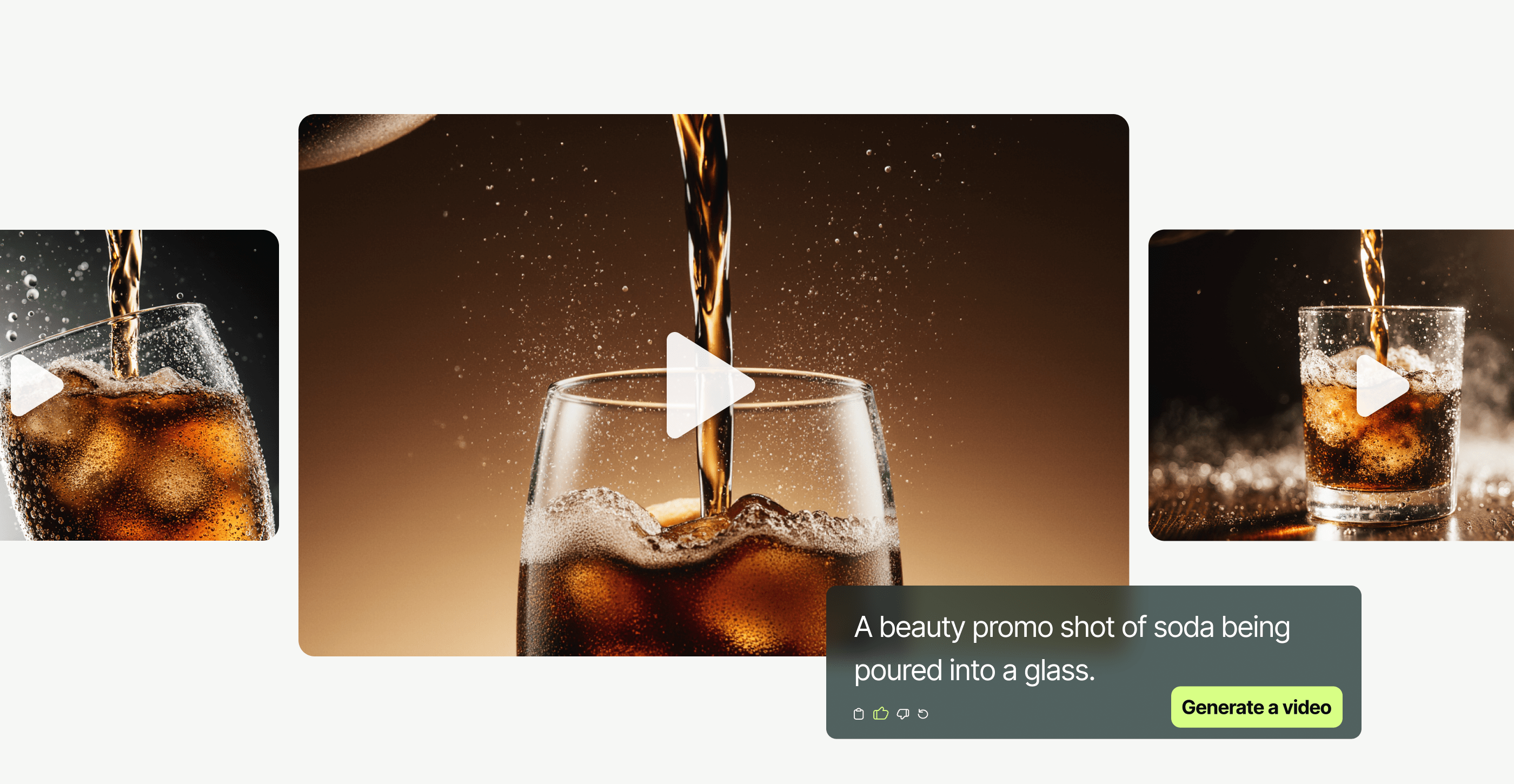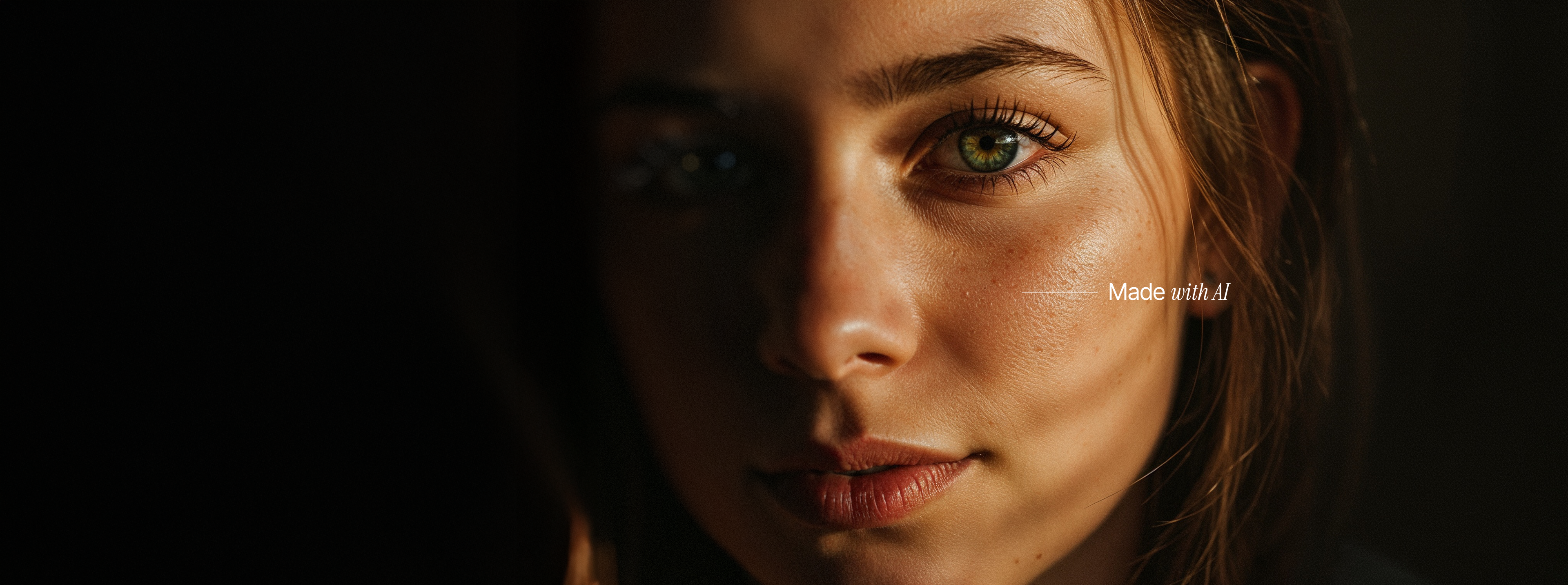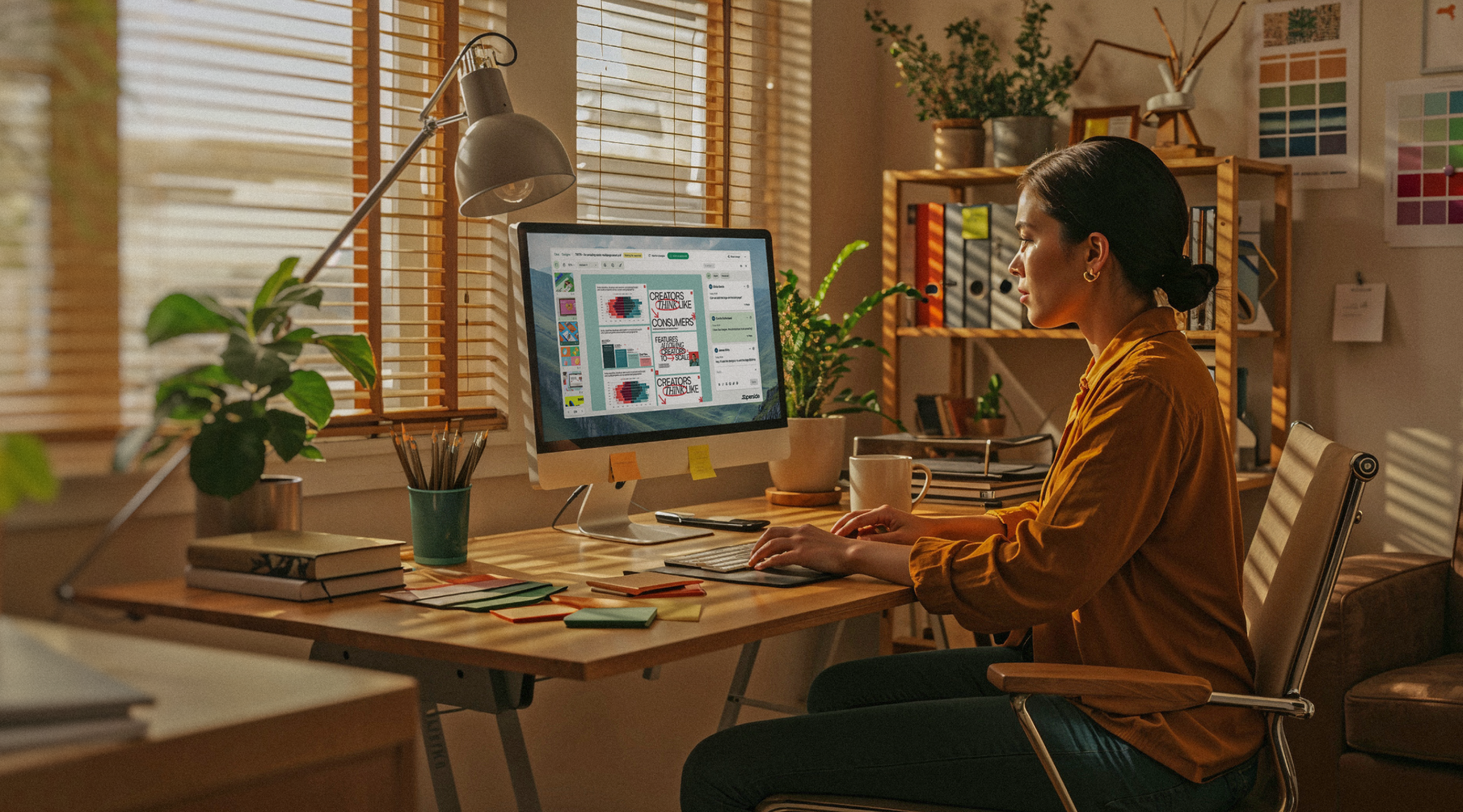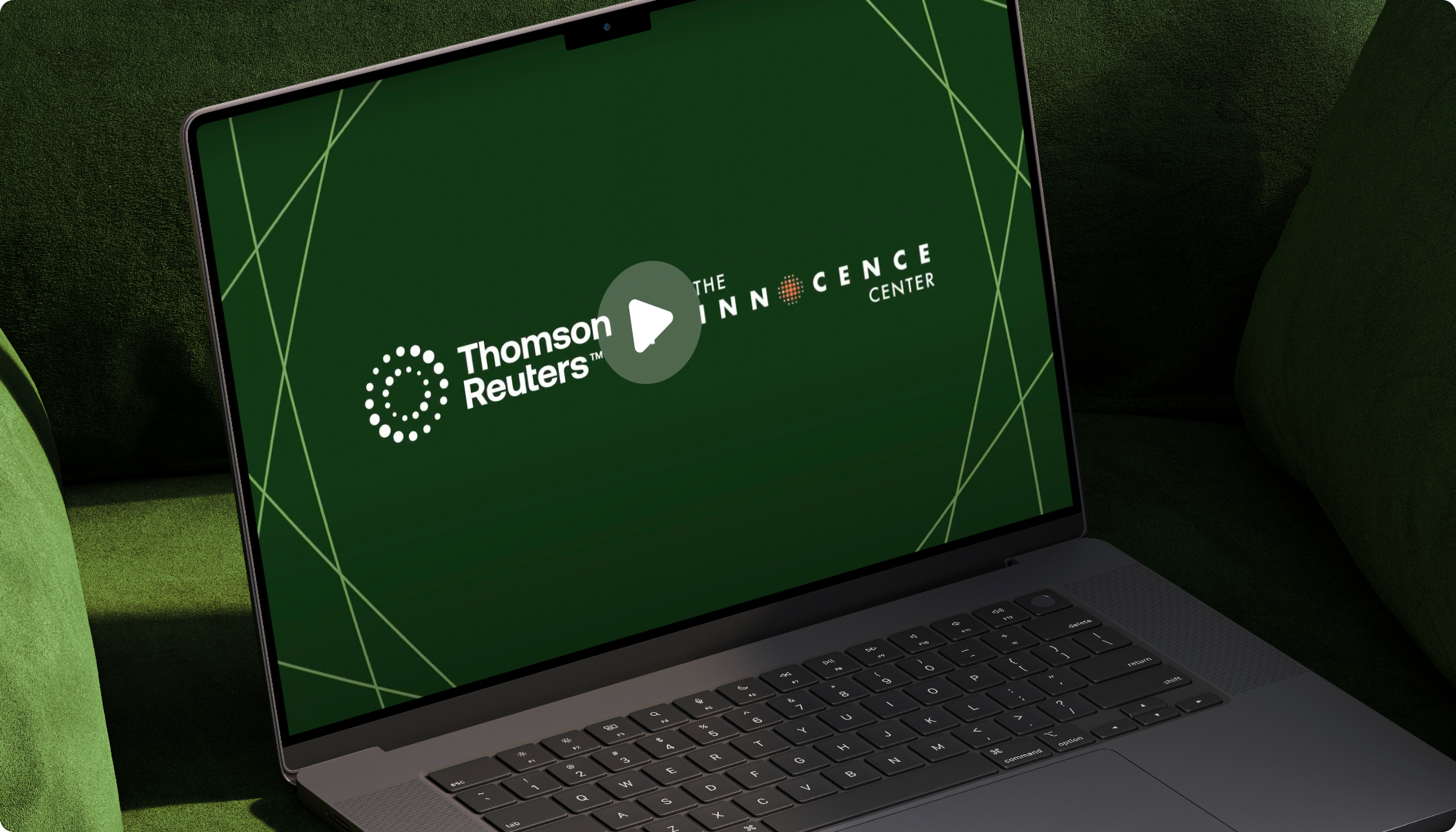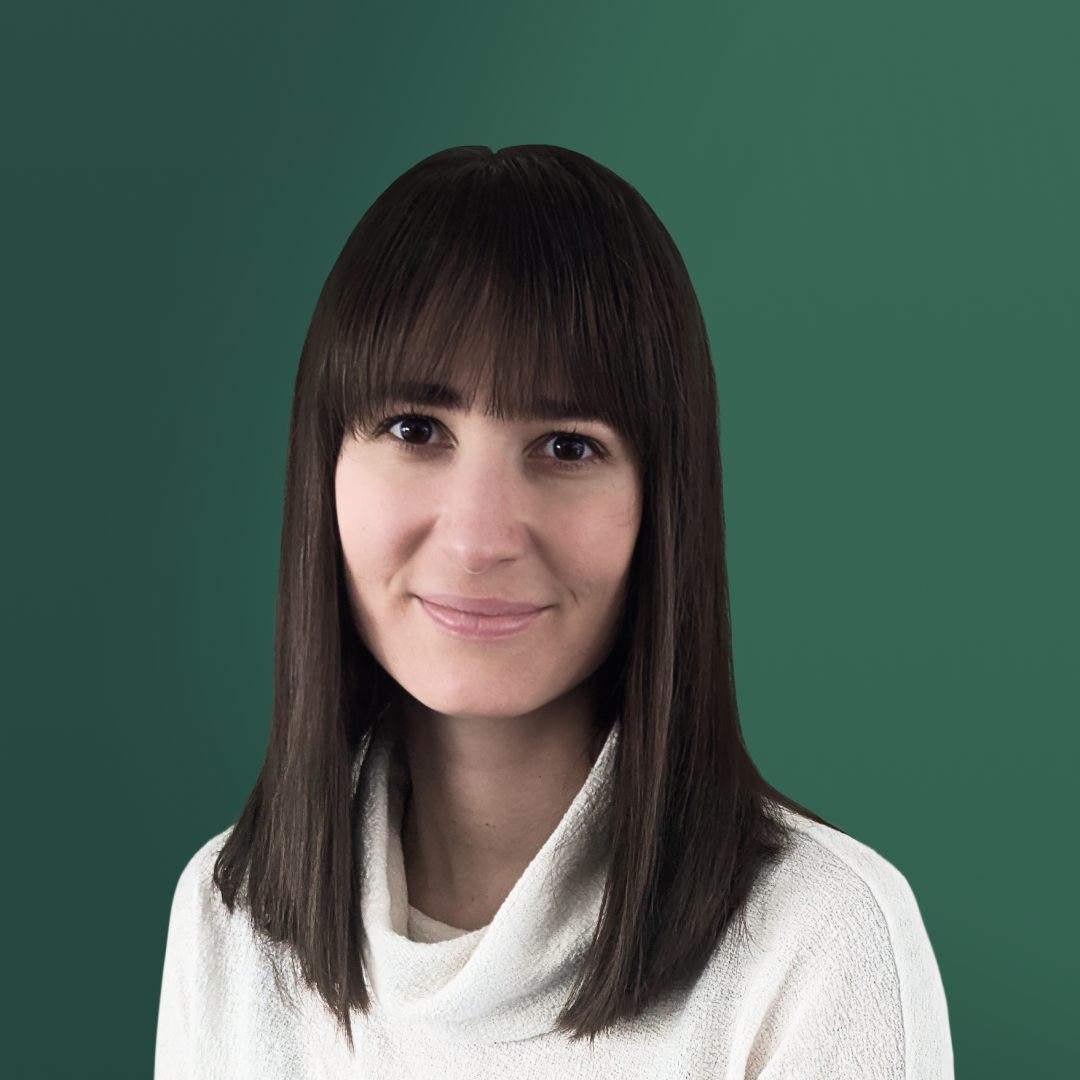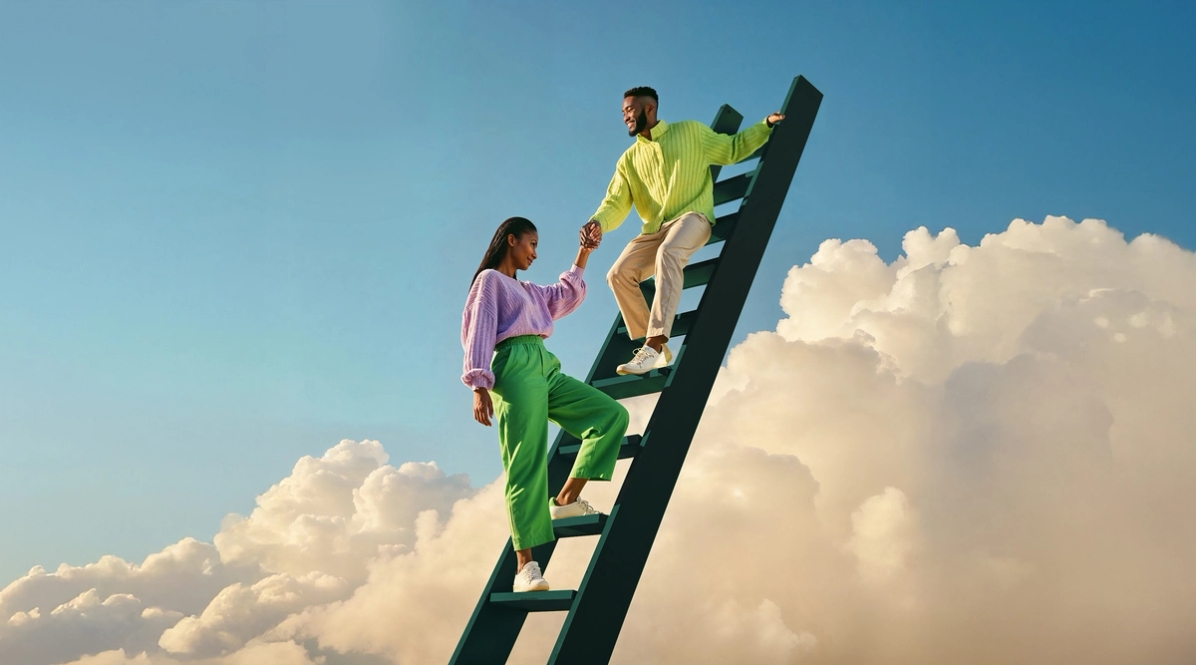Ideating with AI: Inside a creative vs. marketing workflow
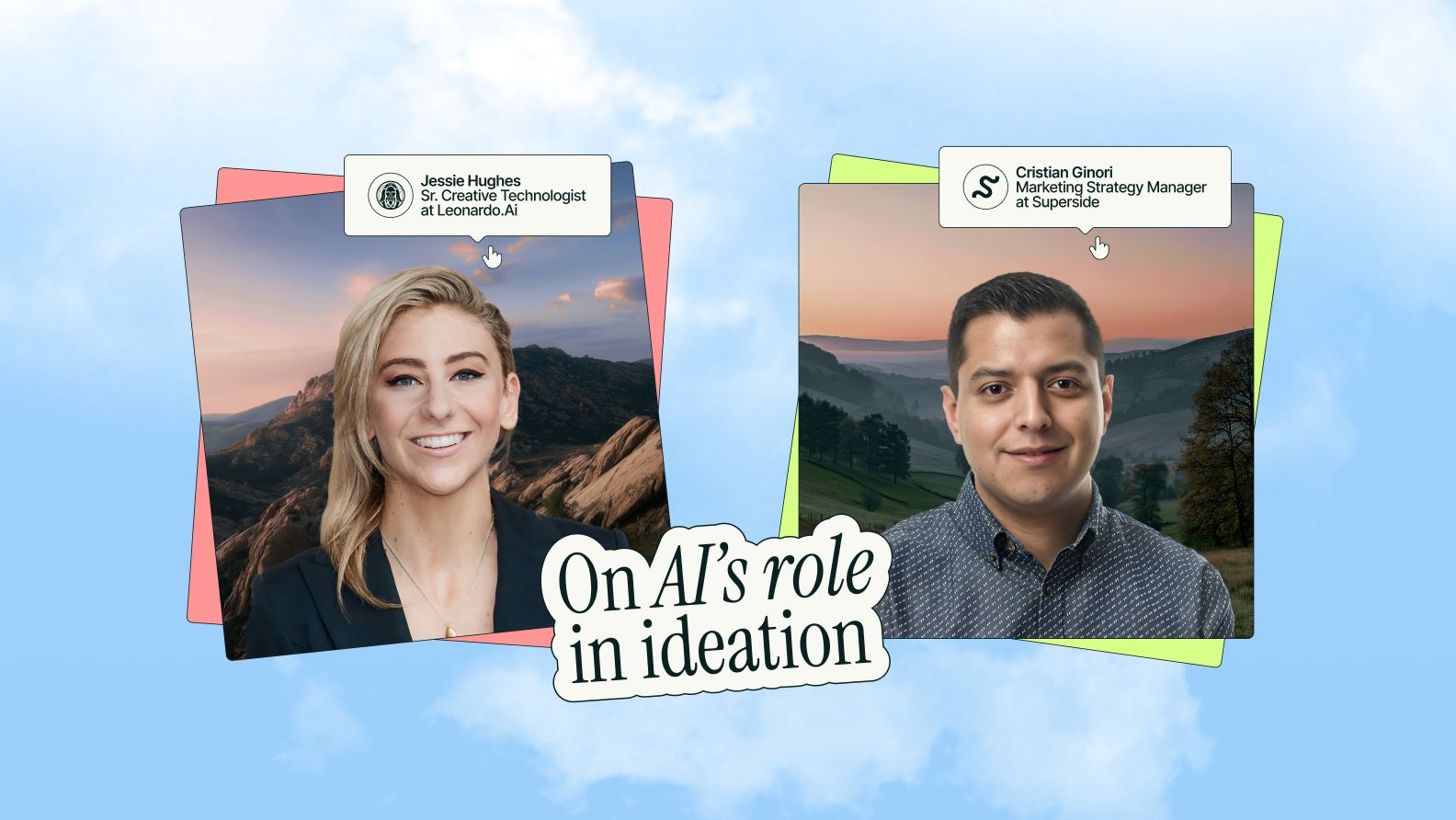
Jessie Hughes chats with AI like it's a friend. Cristian Ginori feeds it frameworks like fuel. Both race ahead with fresh concepts in hand. See how you can incorporate AI into ideation and get better results, too.
When generative AI gives you an eagle with two skateboards, lean in. When it gives you 10 angles for a campaign, choose wisely.
In the ideation phase of her design workflow, Jessie Hughes, Senior Creative Technologist at Leonardo.Ai, embraces AI—accidents and all—to fuel greater creativity. By contrast, Cristian Ginori, Marketing Strategy Manager at Superside, takes a structured approach to brainstorming with AI, using systems to guide creativity toward strategic outcomes.
Superside’s latest guide, Inside Great Creative Partnerships, digs into both approaches—and how AI helps creatives and marketers meet in the middle. Get a sneak peek of these insights, including:
- Why turning up the volume breeds better results
- How to riff, refine and systematize with AI
- What to do when AI has an accident
- Why input and refinement are crucial
Creative exploration or structured strategy? AI excels at both. Here’s how you can, too.
Turn up the volume: Why 64 ideas are better than four
Both Hughes and Ginori point to rapid iteration as the primary power of AI in the ideation process.
A lot of the point of generative AI is iteration. It’s having iterative, variable, constantly-evolving and changing imagery, which I find very helpful for improving or getting closer to a good idea.

Hughes and Ginori agreed volume trumps quality at this stage. Not all the angles or visuals AI shares are going to be great—maybe not even most of them. But when you’re ideating, volume is very important to start. Simply by seeing or considering 64 options instead of four, your work gets better, as you get closer to understanding what you need and the best way of accomplishing that.
AI gives you a lot of angles fast. You don’t have to develop them all further. You can go through them and have that human interaction of ‘Okay, what’s the best way to go, what route should we take.’ It’s a brainstorm partner.

But beyond increasing speed and expanding possibilities, what’s the best way to ideate with these tools?
Riff, refine and systematize with AI
At the heart of both design and marketing is audience insight. But applying those insights to our respective crafts happens in different ways. And these ways mirror how Hughes approaches ideation with AI versus how Ginori leverages these tools in his work.
For Hughes, the creative process starts with the seed of an idea. The next step is creative research—putting together mood boards and reference images, as well as exploring effective applications of a concept for a specific audience. Enter Flow State, a feature in Leonardo.Ai designed for the ideation and exploration phase of the creative process.
Flow State is completely for concepting ideas. It’s kind of like a real time generative Pinterest board that’s bringing your ideas to life directly in front of you.

Flow State works like this: Hughes types in a basic prompt, say “a pink, fluffy shoe,” and Leonardo.Ai instantly generates a feed of images based on that starting point, covering a lot of variety from angles to mediums. By pressing a “more like this” button, she’s able to generate an entirely new feed of images based on her selection.
I can keep diving deeper and deeper, going down rabbit holes for ideas. It’s a really fun way of getting visual references or imagery based on what I’m seeing in my head, rather than what’s out there in the real world.

This feature allows Hughes to take what’s inside her own mind and bring it to life with speed and ease. For Ginori, that speed and ease comes from creating systems.
In his work for Superside, he develops marketing strategies and campaign plans for multiple customers often working within constraints, like tight deadlines and limited resources (sound familiar?). To deliver results under these conditions, Ginori and his team needed to create scalable, repeatable systems, which happens to be the exact context where AI thrives.
Since a big part of Superside’s ethos involves being on the cutting edge of AI, Ginori and his team’s adoption of this technology started back in 2023. It goes without saying AI has evolved at a break-neck pace, and Ginori shared his team has gone from moving 10-20% faster back then to 50-60% faster today—both due to the improvements these tools have seen and the systems his team has developed to apply them.
Superside is always on the edge of AI. At first, we moved 10 to 20% faster and then it went to like 30 to 40%. Now, I could say it’s like 50 to 60%. We’re delivering campaign plans in even a week if we already have the context for the customer, the framework done.

So, what do those systems look like in the context of ideation? Ginori explained there are two parts to it:
- The master framework. Usually, blanket solutions don’t apply. But it’s true, there’s universal information every single marketing strategy or campaign should take into account, like target audience, competitive landscape and brand values. Essentially, all of the questions that need answering to develop an informed, results-driven strategy are included in this master framework. Since Superside delivers strategic support across creative mediums and channels, this framework is further broken down by initiative. For instance, if the brief is to deliver a high-impact video campaign, there’s a section of the framework with questions to answer to develop the strategy. By applying this framework in the ideation phase of campaign development, Ginori and his team ensure their AI partner has the appropriate context to suggest relevant ideas for solving the business problem at hand.
- A custom GPT. Similar to Superside’s Custom AI Image Models, Ginori and his team develop custom GPTs for internal use for every customer (provided they’ve checked the AI enabled box!). They train these models using their master framework, meaning they feed them all the information they have on a customer, from competitors and category to audience and brand. As Ginori explained, “The more we feed it, the more it learns.” So with every project they complete for a customer, the GPT gets better—more efficient and accurate—because it knows more about the brand and the decisions made for that brand in the past.
In addition to these systems, Ginori and his team have a one-pager that breaks down how to use AI across ideation and strategic development, including the output, process, tools and AI steps to take at each phase. This structured approach allows them to not only work faster, but get the best results from brainstorming with AI, ensuring ideas tie back to specific business problems.
On the marketing side, it’s about creating a system to guide creativity into results. What’s the business problem? The communication problem? The marketing problem? Ideas are great, but we need to frame them in a way that really solves the business problem.

Bonus tip: Always be pitching
Another way Hughes uses AI to help with creative ideation?
She opens up ChatGPT as an app, talks to it using the voice function and pitches ideas. She shared the example of pitching a movie to it the other day, speaking to it just like she would a friend. Then, she asked it to articulate her idea in a way that would be easy to pitch to other people. It came back with a synopsis and logline, bringing clarity to her train of thought.
It tightens up the way others can be brought into my ideas. So for me, I use these tools as riffing boards and collaborators in the same way I would use a friend as a collaborator. I engage with these tools to gain clarity around my own ideas.

For both creatives and marketers, the value of this type of real-time, any time idea refinement exercise is clear. Either you’ll learn an idea doesn’t stand up to scrutiny, or you’ll gain the strategic conviction and communication chops you need to pitch it in real life.
How happy accidents fuel creativity
As we’ve touched on, AI expands possibilities, and that can lead to some happy accidents…
Hughes shared an example where she was trying to come up with a design for a graphic t-shirt—her idea was to show an eagle with its wings up doing a skateboarding trick. As she was generating images, the system accidentally put a second skateboard on the eagle’s other leg.
The visual was so much stronger than my concept of having one skateboard. Think about the visual design of two wings, two feet, two skateboards. Much stronger. It helped me elevate my creative concept in a way I hadn’t thought of.

So, far from limiting or stifling creativity, Hughes swears by the power of AI for fueling it. She encourages everyone to lean into those happy accidents—lean into the expansion of possibilities AI offers—because at the end of the day, it can make your ideas even better.
Of course, Hughes took that idea of an eagle with two skateboards and refined it, ensuring the style and aesthetic of the final image aligned with the creative brief. Which brings us to another key point: As Ginori put it, “AI is not an output tool. It’s more of a process and streamlining tool.”
Control and refine AI’s output
AI gets a bad rep sometimes, but the problem isn’t with the tool. As Ginori explained, the problem is when people use, “the information coming out of AI as the outcome instead of as guidance.” Especially in the research and ideation phase, you need to refine and validate the accuracy of the information AI comes back with.
The same premise applies to creative work: A generated image needs refinement by using an AI image editor to fine-tune results and post-production by real humans before it’s ready to ship.
To get as close as possible to ready to ship ideas and assets, Hughes and Ginori both stress the importance of providing AI with as much strategic information as possible. If you sit down at your desk and send a one-liner to ChatGPT asking for creative ideas, the results will be far from inspiring. If you sit down and do the thinking—share structured information on audience, pain points, past campaigns, brand tone and more—the output will come from a different universe entirely.
It’s all about input. The way I see it, I’m the brain and AI is the hands. So now, what I focus on is being very precise about what I need, how I need it and how I frame it.

AI supports the dual mission
Creatives need more time to ideate and create. Marketers need more time to strategize and more assets to test, iterate and drive results.
AI supports this dual mission, but not just through expedited execution. Speaking to collaboration, these tools can provide a window into each others’ minds, serving both as a single source of truth and a communication tool. As Hughes shared, "It allows me to show everybody else what's going on inside my head. When we talk about teamwork, what an incredible skill to be able to bring others into our creative minds."
For more lessons on alignment, working effectively and shipping great creative, be sure to check out the full guide, Inside Great Creative Partnerships.
Tessa is a Senior Content Marketing Manager at Superside with a background in conversion copywriting and B2B marketing for SaaS companies. As a publishing graduate and a digital marketing agency veteran with almost a decade of experience, she has a deep appreciation for the art of storytelling and the power of human emotion combined with creativity. You can connect with her on LinkedIn here.
You may also like these
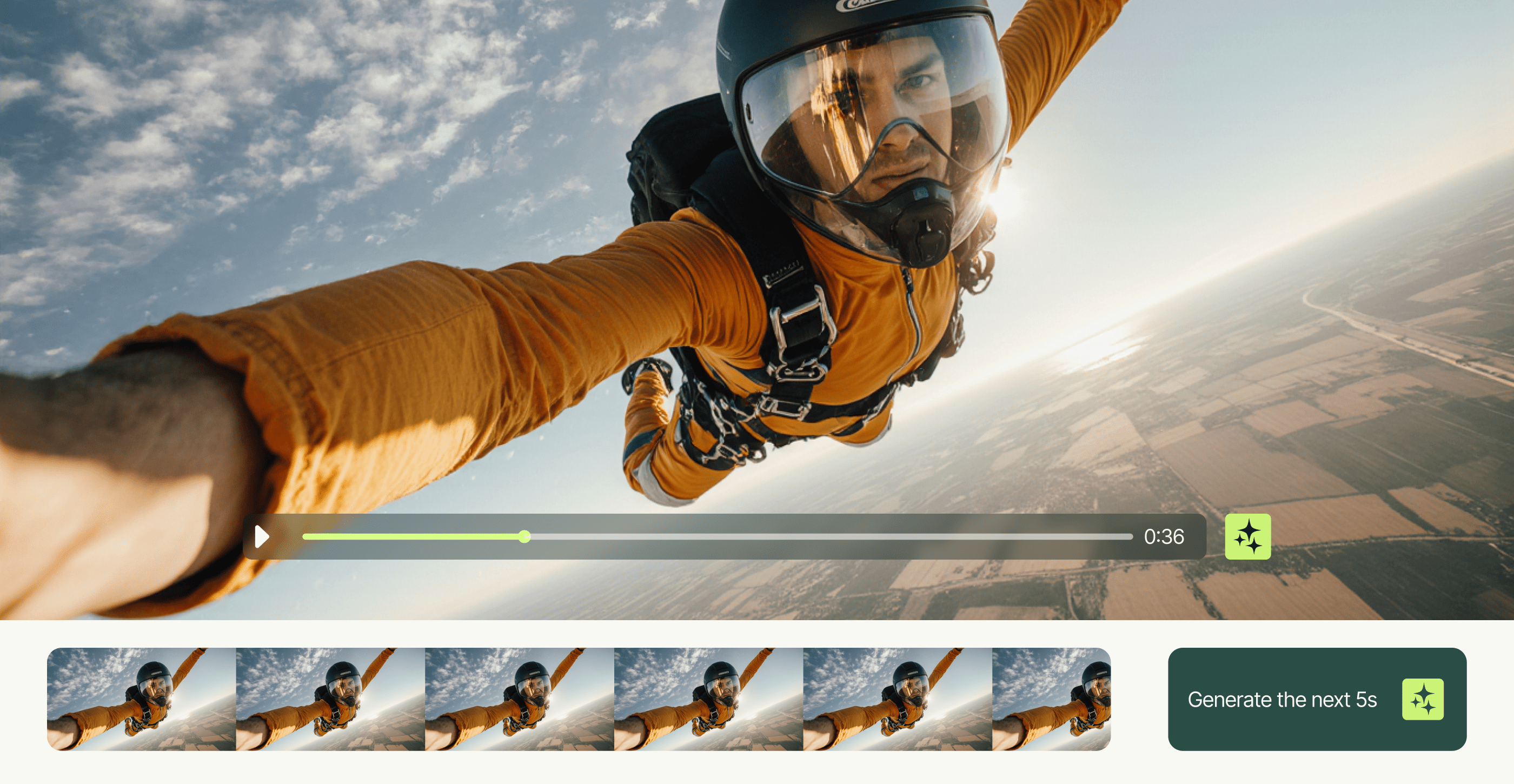
10 best AI video examples for inspiration in 2025
Video marketing continues to prove its impact. Viewers retain 95% of a message when they watch it on video, compared to 10% when they read it in text. And 89% of consumers love the format so much that they want even more branded video content.This demand has driven brands to explore innovative tools and production approaches over the last few years. AI has played a central role. In 2025, 41% of businesses used AI for video production, while another 19% planned to experiment with the tech in the near future.But the unprecedented demand for video means these tools alone aren’t always enough. In the enterprise environment, those who make a lasting impression deliver scale, consistency and fresh creativity. Many creative teams struggle to keep up without a strategic approach that combines AI excellence, top talent, streamlined processes and smart project management solutions.This article highlights exceptional AI-powered video examples crafted by Superside’s creative team, alongside standout work from other brands. We showcase work that tells powerful brand stories and unpack why each example matters for marketers who want to produce videos that win customers.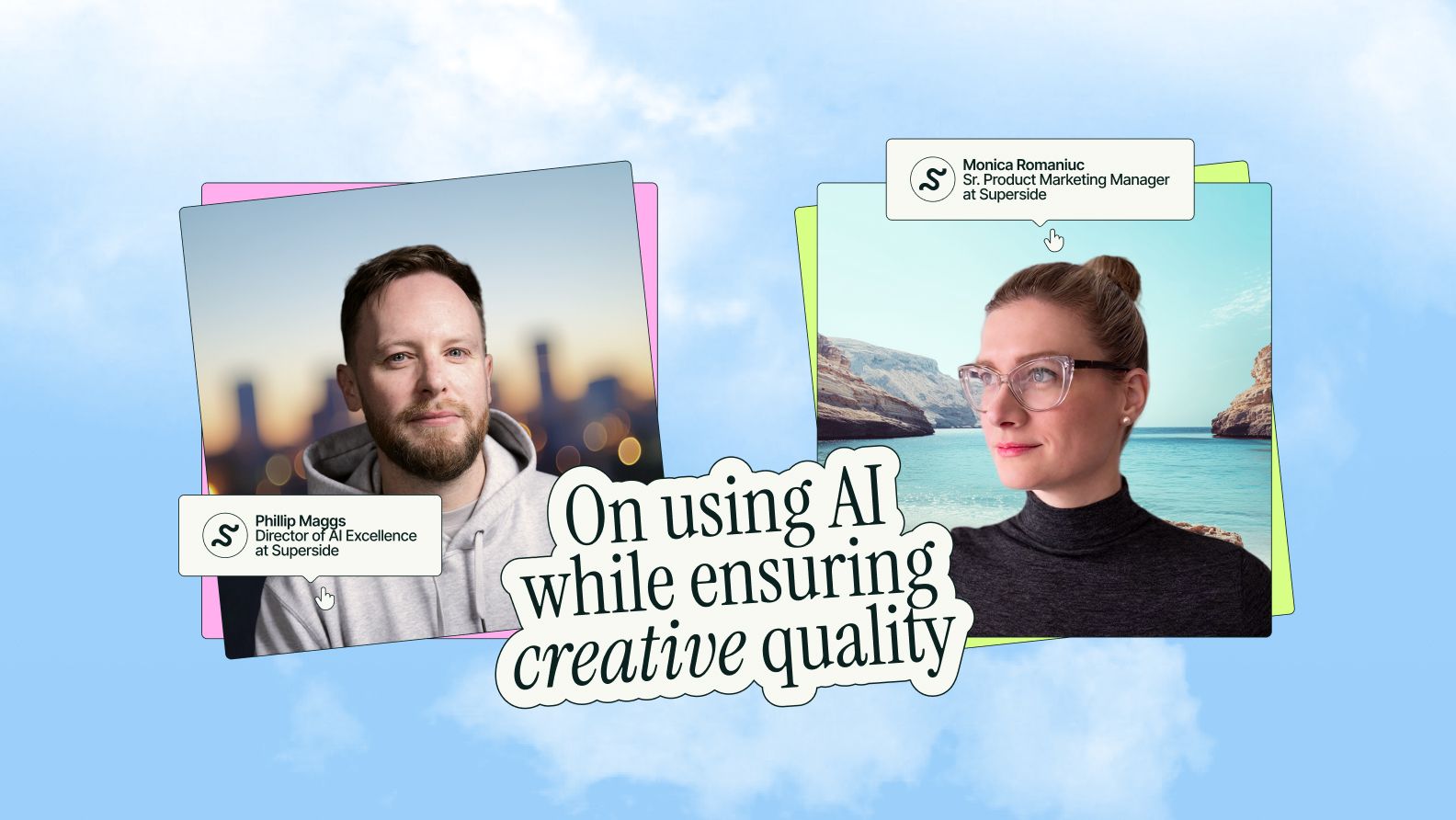
AI meets expertise: Inside Superside’s formula for quality creative
Will it look too “AI-y?” Will it sound too “AI-y?”When it comes to AI, many creatives and marketers share a common concern: Will it compromise the quality of their work?In our latest guide, Inside Great Creative Partnerships, Superside’s Phillip Maggs, Director of AI Excellence, and Monica Romaniuc, Senior Product Marketing Manager, confirmed this fear is unfounded—provided you’re doing it right. From quick tips to caveats, they shared:Where AI can provide value across creative and marketing workflowsWhy legacy stacks are a caveat (but not a lost cause)
7 best AI video studios for large-scale creative
When AI tools like ChatGPT and Midjourney first launched in 2022, they were little more than a novelty. But within a few months, AI usage surged across fields such as programming and marketing, with enterprise brands leading the charge.Video production has seen some of the most exciting developments in generative AI. Not so long ago, it was almost impossible to produce realistic-looking AI videos. Today, with the right creative direction and strong human oversight, it’s a fully viable production method.The fact is, AI tools can generate good videos, but that alone won’t meet the high creative standards today’s top enterprise brands have already set. If your brand operates at this level, you need a video studio partner that deeply understands brand, scale, messaging and AI-driven precision.This guide reveals what AI video studios bring to the table and why they beat DIY tools for those who want to deliver top-quality creative at scale, with insights from Francesca Bocaranda, Video Producer at Superside. Stay tuned for a curated list of the best AI video agencies that’ll transform your video production capabilities.What AI video studios agencies actually do